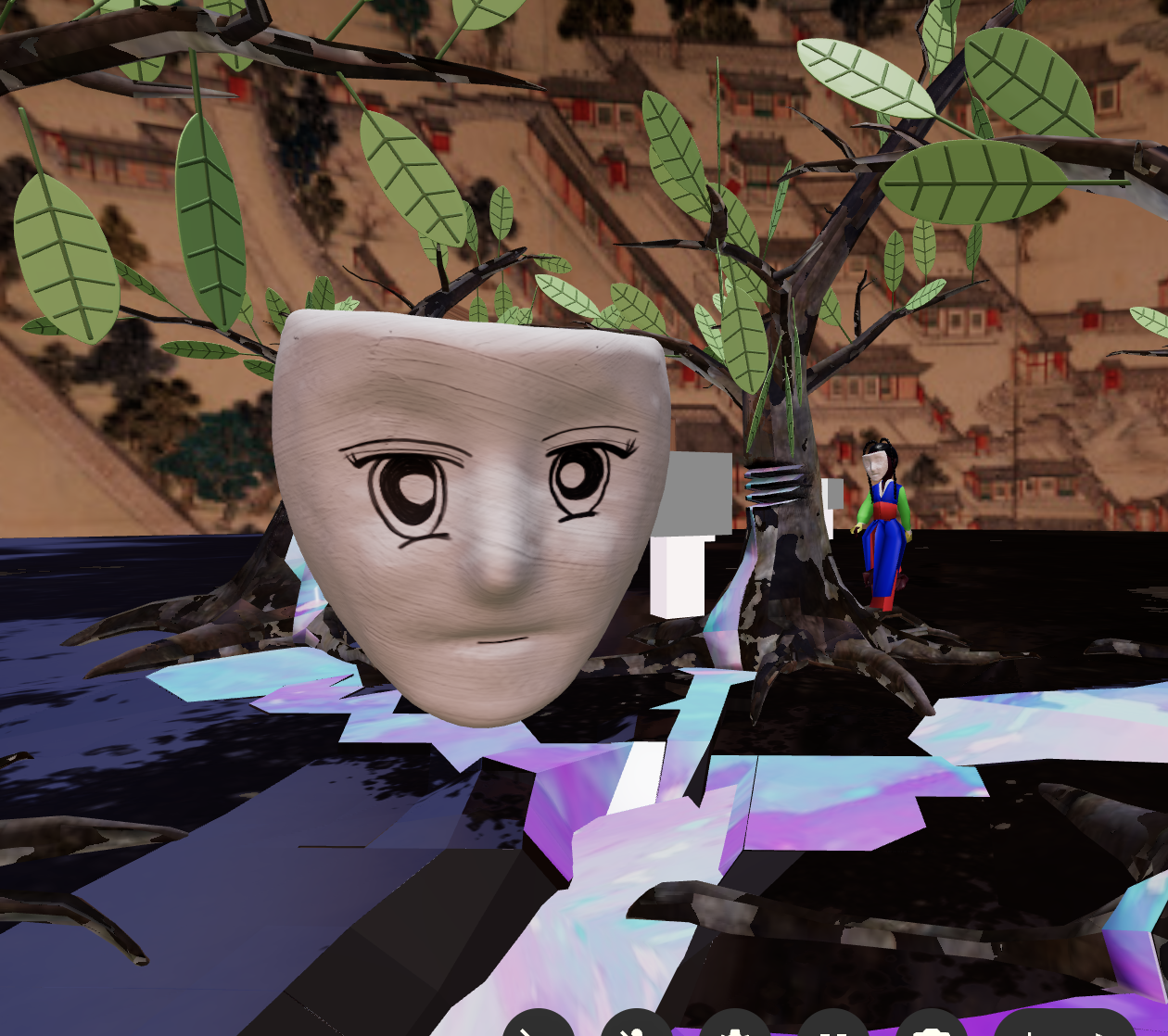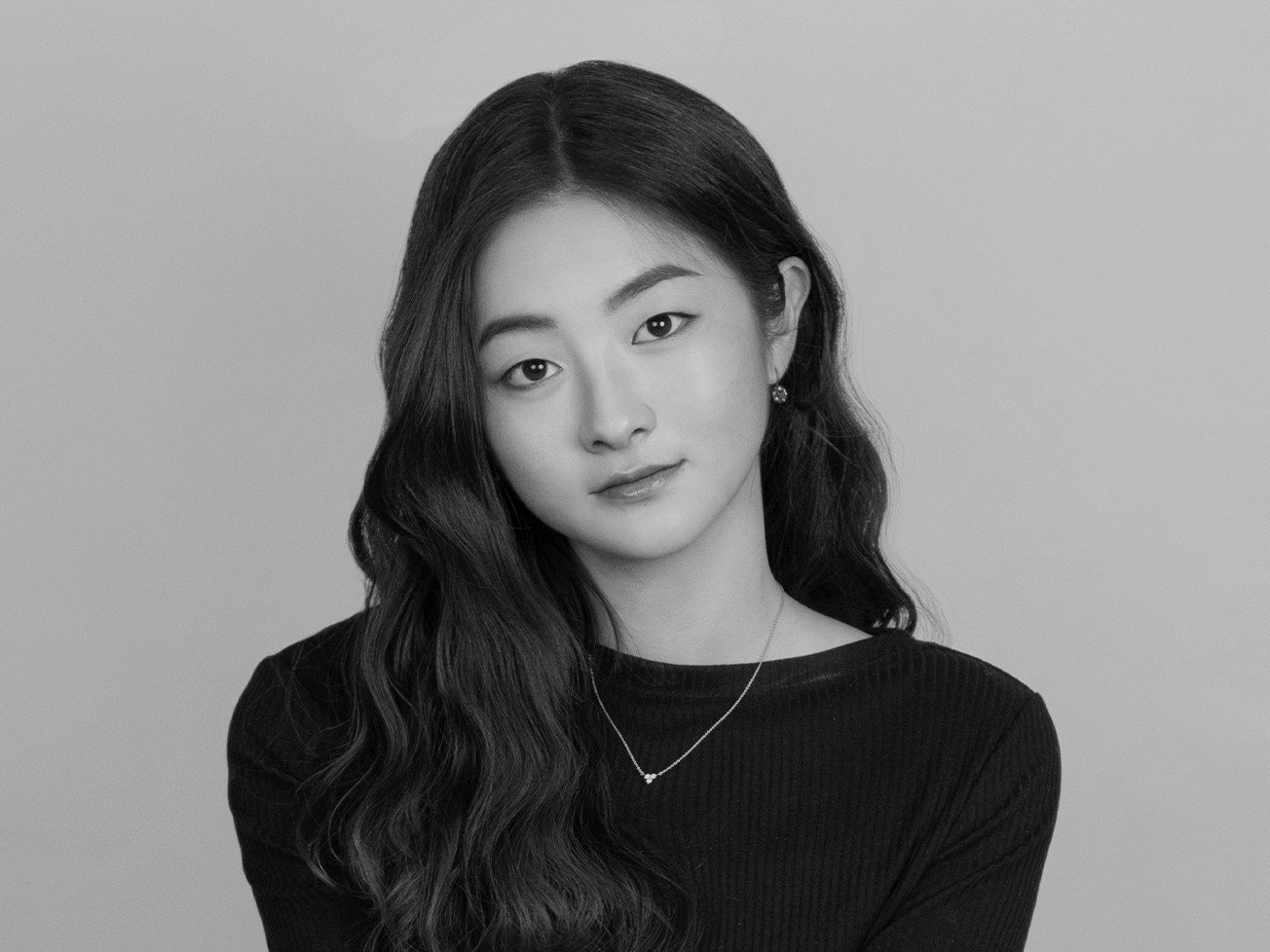Somu's Mask and New Mythos for the Metaverse
We interviewed LA Resident Artist Andrea Kim about the inspiration and intentions with developing Origin of Somu during her residency with CultureHub.
Virtual webXR performance space created using Arium.xyz
Tell us about what you worked on in the CultureHub residency. What did you do in the CultureHub LA studio?
During my residency, I developed an essay and performance venue in webXR. I wanted to create a new type of engagement with "the metaverse," both as an idea and a 3D space. With both the writing and world-making, I played with an assemblage of real and imaginary places, objects, and symbols across posthuman theory, the internet, and folklore. It was a thought experiment guided by a live performance online. The narrator was a spiteful spirit housed in a small, sea shrine in Korea. I depersonalized myself through this character because the event felt indulgent, gratuitous, but I felt stubborn in what I wanted to say. I was fascinated by the interior and exterior dimensions of masking, as an act, and the mask, as an object. In ritual, masks are forms of protection, but what is it that happens within the performative space? When thinking about becoming an avatar, I think first back to archetypes of personhood-- the virtualities of identity-- bringing us to gender, ethnicity, culture. How would a masked performance unfold in a hypothetical "global village?" That is the story I want to tell.
You developed Origin of Somu within a WebXR environment. Can you talk more about the format of the work and why you chose it?
WebXR allows users to move around (WASD) in 3D and chat from their web browsers. I was pretty excited for my live video stream, in costume at the studio, to be in the tiny picture frame in the 3D sea shrine, inviting the avatars to enter its diegetic space. It's humbling to work between text and 3D because you start to see the relation between the two at the programmatic level. This will be very important in the very quickly approaching age of text-to-3D in which our grasp upon algorithms will become the new language we speak. WebXR also allowed for different forms of online participation, like getting closer or further, paying attention or not. The beta aspect signifies the work as in-progress, perhaps inviting continuous and recurring dialogue. The user engagement style was also an experiment - if one calls, who responds? For me, the insights and media shared by the audience members inspires a deep sense of gratitude because each of them come from a unique perspective and vantage point that they are choosing to bring forth.
Video stream of Resident Artist Andrea Kim in a virtual sea shrine at the entrance of the space
Could you talk a bit about the character Somu? What does she symbolize?
Somu is a shaman girl who embodies virtual personhood in a historico-mythical "global village," which stands in as a metaverse of sorts. In the story, a faceless creature forms from a swamp of electronic waste and is gifted the Somu Mask from a deity named Mago. Around this time, nearby villagers were holding a ritual to appease the restless spirit of a young maiden who died out at sea that was causing a famine. If there were a punctum through the fourth wall, it would be here. Upon emerging from the swamp, Somu grabs the young maiden's dress hanging off a nearby tree, and runs off into the village with her new identity. My inspiration for Somu was from a character with the same name in t'alch'um (탈춤), the Korean mask dance play. She has no lines in the play. She goes from acting demure, as women needed to be within Confucian society, to seducing an Old Monk, then ultimately gives birth to another man's child. In this way, Somu is an archetype for a certain female-coded sexual drive and irreverence for the Confucian social order. She also serves as a reminder of the absences and erasures in the body-based practices of East Asian women throughout history, which is why I wrote in her role of also being a shaman and spiritual keeper that connects knowledge across time, space, and disparate realms. What one does with the Somu Mask and how the narrative evolves from it is the next question.
Screenshot of Somu’s Mask during Origin of Somu performance
What sort of social and political ideas did you examine in this piece?
The Somu Mask has manga-style eyes drawn onto it, an homage to girls' creativity and fan practices that consider femme, queer, and non-gender conforming people as full characters driven by their own goals, desires, and visions. Many digital avatars and metaverse campaigns derive from commercial industries, such as pop music and anime, that profit off femme bodies and imperial values of whiteness. The Somu Mask represents a face from which to confront contemporary digital culture. The white mask, moreover, is also a symbol in decolonial political philosophy to reference specifically the double consciousness of race. The global metaverse industry is a neoliberal system that relies on materials unethically mined in Africa and manufactured in Asia, for instance. For Somu to be born from a swamp of e-waste refers to the life cycle of hardware and the need for developing new systems. And because we live in an era of data surveillance, I am drawn to the possibility of masks for complete occlusion. So the mask, to a degree, is a reference to hacktivist practices but more so returns to the original significance of masks, the duality it produces, as a force for change.
Do you have any plans for what's next artistically?
I am working on a video artwork as a companion piece to my CultureHub Residency. In terms of the broader project, I worked with a dancer from the Seoul Institute of the Arts to collect motion capture data and directed various gestures for Somu. She exists as a photorealistic MetaHuman, around 13 years old, for whom I plan to script some dialogue for. Ultimately, I want more masks within this framework to develop an evolving mythos that drives how we imagine the metaverse, and for it to be a transcultural virtual production. As mentioned, masks are a form of protection but also a symptom of where there is danger. So I wonder where those boundaries of conflict are with the decentralized web, such as tensions with censorship and cybersecurity, and if narrative can be a way to unravel the operations of power. Opening up that dialogue as not only a form of research but also in co-creation is exciting to me, always hovering on a space of transgression from the imaginary to the real.
Andrea Shinyoung Kim is a documentary media artist and interdisciplinary scholar from Orange County, CA working between LA and Seoul, South Korea. With a long standing interest of bridging art, science, and technology, Andrea explores how virtual worlds can be designed in ways that center cultural memory and queer embodiment. Formerly, as a research assistant at the MIT Open Documentary Lab, Andrea explored transmedia documentary forms and co-creative methods. Currently, she is pursuing her PhD at USC in Media Arts and Practice. Andrea is a CultureHub LA Resident Artist (2022-2023).



